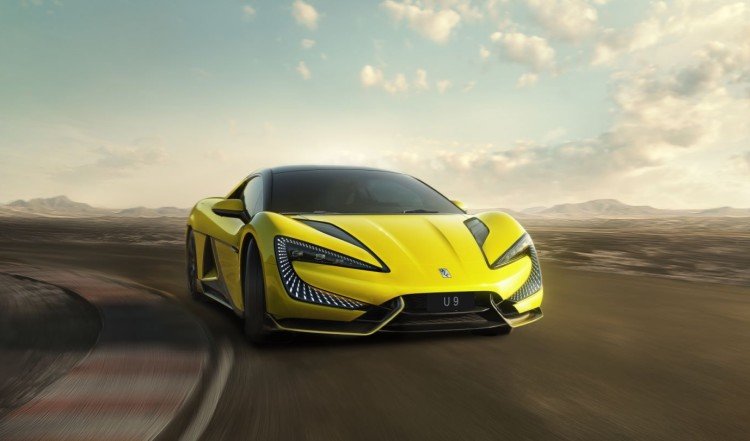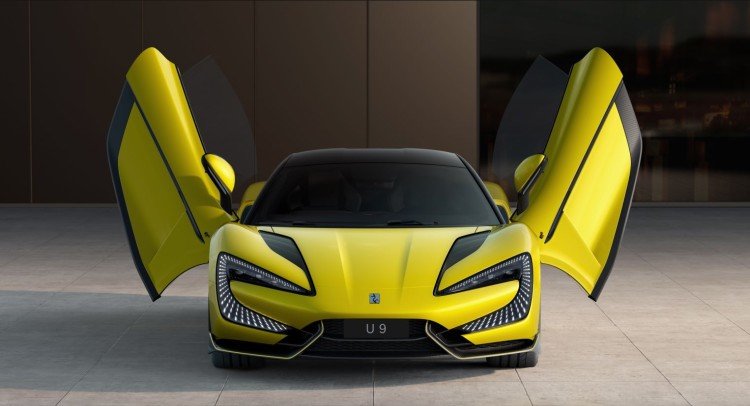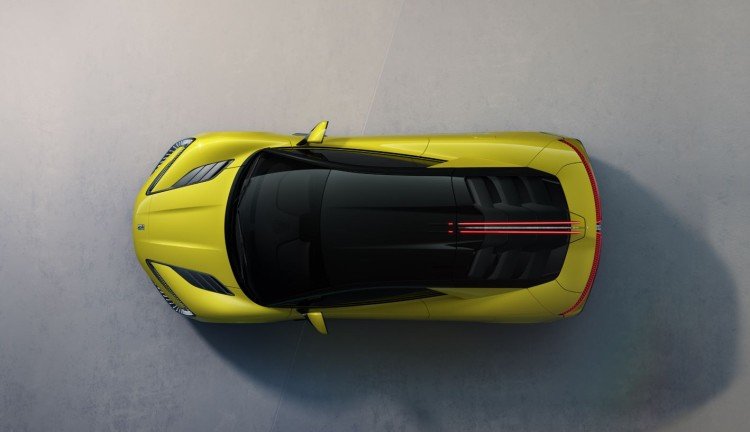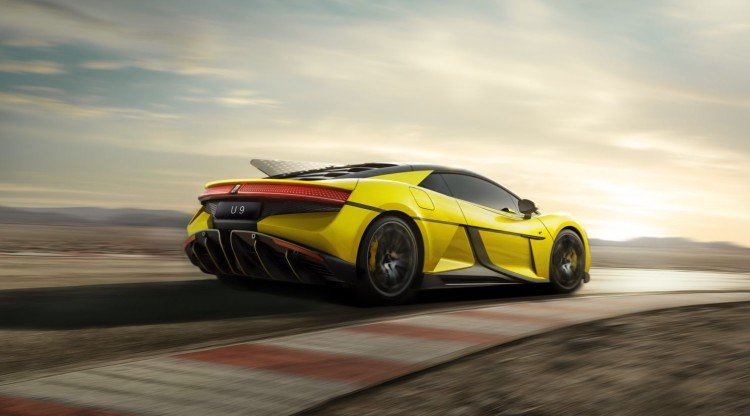Looking forward to the starting of U8/U9: Four motors are leading BYD to "take off"
After several months’ fermentation, the first million-level new energy hard-core off-road vehicle-U8, and the first million-level pure electric performance super-running vehicle-U9 officially ushered in the first launch, and the new brand’s "Easy Sifang" core technology was released simultaneously. From the perspective of consumers, these two cars not only broke the price ceiling of domestic products in the automotive field, but also represented domestic products in the field of new energy technology research and development and application, and reached a new global leading height.
Without much gossip, today we will focus on what new inspirations the core technology of "Easy Sifang" has for new energy technology innovation. And, two million-class new energy vehicles, how do you expect U8 to "reduce dimensions and attack" traditional hard-core off-road? Looking up at U9 how to subvert the imagination space of new energy super-running?
● "Easy Sifang" platform: four-motor four-wheel drive technology that subverts imagination
To correctly understand the "Easy Sifang" technology platform, we must first understand the driving mode of passenger cars. First of all, the fuel car, regardless of whether it is a front drive, a rear drive or a four-wheel drive, or a 6X6 car like AMG G63, is essentially an internal combustion engine that drives the wheels at the same time through the power distribution of the transmission mechanism. Unlike pure electricity, a motor represents an independent power source. At present, in active products, two-wheel drive is one motor (front or rear), and four-wheel drive is two motors (front+rear).
All the above is nonsense, but it is the basis of understanding the "easy quartet" technology platform. The platform will all use four independent motors (the front axle dual motors are an assembly, and the rear axle dual motors are an assembly), and the four wheels will be driven by the reducer, the half shaft and the universal joint respectively, so that each wheel will have its own steering, rotating speed and traction distribution (collectively referred to as four-wheel dynamics), which indicates that the electronic control system can independently control the wheels with higher freedom and accuracy, and the resulting function expansion and characteristic reconstruction are not the same for a fuel vehicle with a single power source.
For example, the traditional four-wheel drive system of a fuel vehicle requires the transfer case (or central differential) and the front/rear differential to transmit the power from the transmission to the front and rear wheels, and the more comprehensive the four-wheel drive, the more hardware modules are needed, including low-speed creep, tank U-turn, front and rear differential lock and so on. However, the four-motor-driven four-wheel drive system can fully realize these functions without complicated transmission-locking mechanism. For example, in the face of the theoretical special scene of "three wheels suspended", the traditional four-wheel drive must lock all the front/middle/rear differential locks to ensure traction, while the four-motor drive only needs to provide power output to the motor with adhesion.
At the same time, the structural redundancy of the traditional four-wheel drive system also greatly reduces the perception speed and accuracy of the whole vehicle, because it takes response time from the electronic control to the execution of the mechanical system, and the more complex the structure, the more so, which we usually call hysteresis. However, the four-motor drive has no power distribution mechanism at all, even the clutch and transmission. The power output by the motor directly goes to the wheels through the reducer and half shaft, and the response speed is millisecond. This not only has accurate vector control for the traction of the vehicle at high speed (similar to overspeed vector four-wheel drive), but also can make the other three wheels control the vehicle forward with more reasonable traction through special electronic control execution program, thus ensuring the stability of the vehicle. You can understand it as a "three-wheel drive mode" specially prepared for tire puncture.
● Looking up at U8 & Looking up at U9: New Enlightenment of Off-road Vehicle & Super-running
So specific to the product level, what are the "outrageous" technical applications and special functions of looking up at U8 and U9 from the "Easy Sifang" technology platform?
First of all, in terms of parameters, the official data show that the maximum power of a single motor of this electric drive system is 220-240kW, the maximum torque is 320-420Nm, and the maximum rotation speed is 20500rpm. The torque amplification after passing through the reducer is undoubtedly amazing. The acceleration time of 0-100km/h on looking up U8 is 3s, and 2s+ "breaking a hundred" can be achieved on super-running U9. After all, the book data is already above 1100 horsepower, and the power is no longer a short board that limits the acceleration ability.
Then look up at U8, which is a hard-core off-road vehicle built on a non-load-bearing body. From the chassis structure, we can see that the dual motor modules on the front and rear axles and the blade batteries on the chassis are directly installed on the longitudinal beam, which is completely different from the Tang EV with a load-bearing body. In addition, the platform also supports hybrid expansion, that is, an internal combustion engine can be installed above the front axle. Although the details are not clear for the time being, my personal guess is that it should be the extended range mode. For this four-motor four-wheel drive, it is of little significance to drive the whole engine directly.
As for the necessary functions of hard-core off-road vehicles, thanks to the independent control attributes brought by four motors, it is hoped that U8 can get out of trouble by "one leg" even if three wheels are suspended, because TA does not have to consider the idling problem caused by differential (4H/4L, crawling mode and three locks are all floating clouds).
On this basis, looking up at U8, there are many very hard-core function extensions, such as "genuine tanks turn around". The traditional hard-core off-road tank turns around by locking the wheel on one side into a circle and turning the wheel on the other side, which is different from looking up at U8. TA can turn the left and right wheels in the opposite direction, thus turning around the center of the vehicle. In principle, as long as the space is slightly longer than 5 meters (actually, it should be the diagonal length of the vehicle), it can directly turn around in circles, which is exactly the same as the tank with crawler.
In addition, we know that the three-electric system of pure electric vehicle does not need to be powered by intake air (oxygen) and gasoline combustion like the internal combustion engine, so the whole power system can be completely closed; At the same time, the structure of the non-load-bearing car allows the body-in-white part to be highly closed. Therefore, the cockpit airtightness reaching IP68 level is also applied to this U8, and even the emergency floating ability can be obtained by virtue of the four-wheel independent vector control function, which is an unimaginable function of fuel vehicles.
After looking up at U8, let’s take a look at the super sports car endowed by the "Easy Sifang" platform-what unique BUFF do you look up to U9?


For supercars, the most important test for manufacturers is the traction control in high-speed state, which is undoubtedly a natural advantage for four-motor four-wheel drive. For example, when dealing with high-speed right corners, traditional sports cars need complex and efficient electronic control actuators to realize the overspeed of the left wheel, that is, vector four-wheel drive. It is much simpler to look up at U9, and this function can be realized only by accurately controlling the left and right wheel motors. Even if there is no steering system, vector steering can be realized by the motor. After all, it is ok to turn around in place, and vector steering is the basic operation.


In addition, U9 also has "Sao operation" in the braking system. In addition to the brake discs and calipers on four wheels, the electric drive system can also achieve active braking at the electric drive level through positive and negative electric control torque output. Even, you can achieve a braking distance of less than 40m and an agile steering ability of less than 12m while the steering gear and brakes are not working. You can understand it as "engine braking technology" on new energy vehicles.
● Edit Comment:
From dynasty series to ocean network, and now looking up to brands, automobiles show us the deep leap of enterprises from the leader of new energy vehicles to the leader of new energy technologies. In particular, the four-motor four-wheel drive technology brought by the "Easy Sifang" platform is undoubtedly an inspiring thinking innovation for the electrification innovation of hard-core off-road and super sports cars. On the other hand, the success of looking forward to it represents the great victory of the "technology, industry and trade" route of contemporary China enterprises, and it is also the pillar of China manufacturing based on the future.